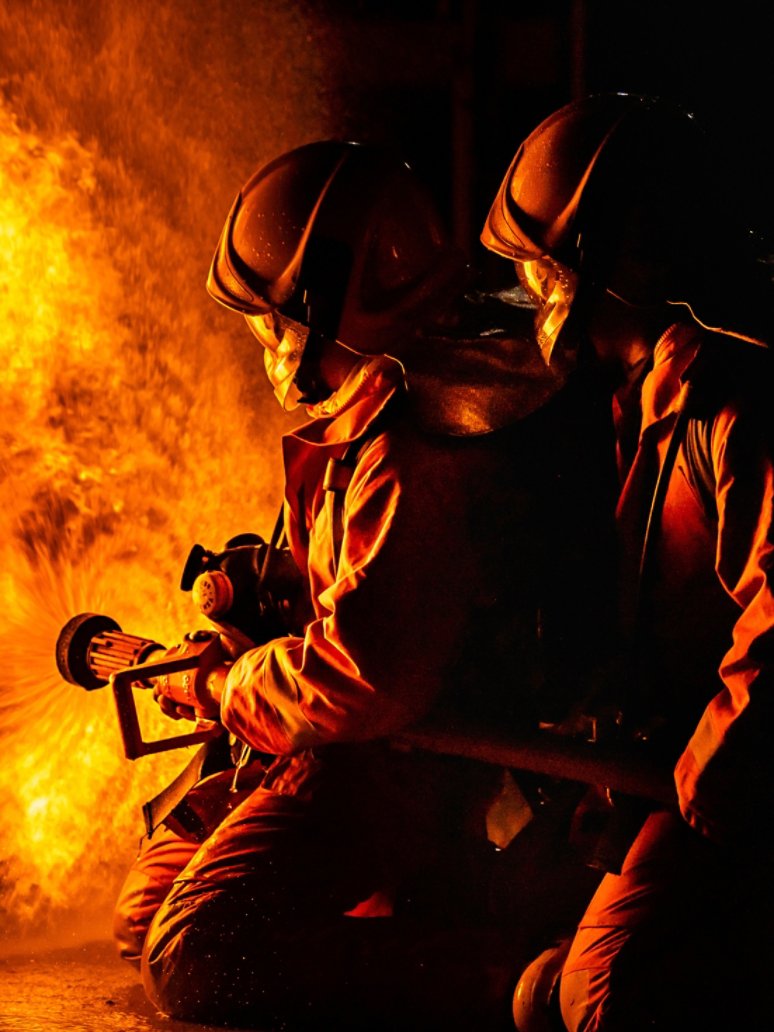
Firefighting involves risks far beyond the immediate dangers of spreading flames. Many firefighters also deal with invisible occupational hazards, such as exposure to toxic chemicals and carcinogens. Similarly, industrial workers who work with hazardous compounds could be exposed to dangerous chemicals.
Faced regularly with dangerous situations, fire departments and industrial organizations have long worked to address health and safety risks.
What can AI do to help?
As part of a prototype that combines sensor and cloud technology with artificial intelligence (AI) to monitor exposure to environmental hazards, Kyndryl technologists, supported by Kyndryl Vital, are harnessing emerging technologies to develop scalable solutions that will provide timely, accurate data in an easy-to-read dashboard. This technology allows firefighters and industrial workers to address situations on the ground as they change in real time.
Here, Salomé Valero, Kyndryl Spain’s Innovation Director, and Sarah B. Nelson, Kyndryl’s first Distinguished Designer, discuss why co-creation is essential for innovation and technology’s potential role in improving worker safety.
Why is technology so important for emergency responders such as firefighters?
Valero: Firefighters play a crucial role in protecting people and the planet — especially as climate change’s warmer, drier effects fuel more intense fire seasons that threaten the environment and densely populated areas. Because firefighting inevitably involves life-threatening situations, fire departments have tried to better protect firefighters by using centralized devices to estimate gas and toxin exposure or sending a nurse into the field to collect health measurements.
At Kyndryl, we’re working on technology that can provide more real-time information from sensors so fire departments can make better decisions — on the job and as they plan for future scenarios. We’ve tested a prototype with firefighters in Spain that uses Internet of Things (IoT) sensors, a mobile device, cloud technology and AI-powered analytics to distill data into a health status that can be monitored with a dashboard, showing data collected during wildfires, urban fires and in industrial environments.
How does having access to this information help fire departments?
Valero: By combining these technologies, workers and departments can monitor information from sensors and mobile devices, and use that information to make more informed personnel decisions. Our prototype enables fire departments to track information from sensors, such as levels of harmful gases like carbon monoxide and vital health information like pulse rates. The prototype also combines this environmental and health data with geolocation from a mobile device to help fire departments make real-time decisions.
Kyndryl Vital played an essential role in developing this prototype. Why was co-creation key to development?
Nelson: Kyndryl Vital tackles challenges with a human-centered design approach. Starting with our customer’s needs, understanding the business and environmental context, and then identifying the technical enablers will help us do what Kyndryl does best. We can then bring Kyndryl’s technical expertise — cloud, networking, data and AI — to create a truly integrated solution and solve real-world challenges. Bringing this expertise together alongside that of our customers and partners, Kyndryl Vital can unlock the power of our collective creativity and help ensure we solve the right problem the right way.
What does this commitment to co-creation look like in action?
Nelson: When trying to solve a complex problem involving governments, enterprises and frontline workers, well-choreographed collaboration is critical. From the start, the team designed the prototype to be practical for real-world use by active-duty firefighters, healthcare professionals with experience supporting fire departments and expert technologists in the development process.
Has the prototype been tested in real situations?
Valero: Yes, the prototype testing we’ve done to date in Spain is a direct example of how technology can drive progress. We are helping to solve a long-standing challenge through a solution that relays environmental sensor data such as carbon monoxide, nitrogen dioxide, temperature, humidity, firefighter’s heart rate and smoke density to mission-critical industries and workers so they can make informed decisions to manage and assess the health of the essential workers we rely on every day.
What’s in store for future development?
Nelson: A human-centered design approach to creating technology can have a clear role in helping organizations use information to better manage health and safety measures for their workers across industries. Our prototype was developed in conjunction with wildland firefighters, but this technology can also help urban fire departments with dispatching and trafficking, as well as in industrial environments such as manufacturing or energy, which may involve hazardous materials.
Valero: In early 2024, the European Commission awarded Kyndryl 1.2 million euros to develop the firefighter prototype further by exploring technology integration between private 5G and AI with enhanced data collection and weather forecasts.
And how will Kyndryl Vital continue to support this work?
Nelson: Kyndryl Vital will be key to help ensure that we’re meeting the technological and data requirements of our customers. A human-centered design approach that emphasizes co-creation will continue to be essential to our ability to create customizable assets that provide actionable data to meet the needs of our customers.
Valero: We’ll continue to refine the prototype and explore additional applications supported by our open integration platform, Kyndryl Bridge. We’re committed to using all the tools available to help our customers deal with the complex problems they face and make a difference in how they operate and manage their personnel.
Join us at AWS re:Invent 2024, Dec. 2-6, 2024, where Kyndryl will showcase the firefighter safety prototype demo and host the breakout sessions, “The new paradigm: ‘human plus,’ innovation and practical ways you can play to win in the age of AI” and “Creating the foundation to support technology’s advances.”


